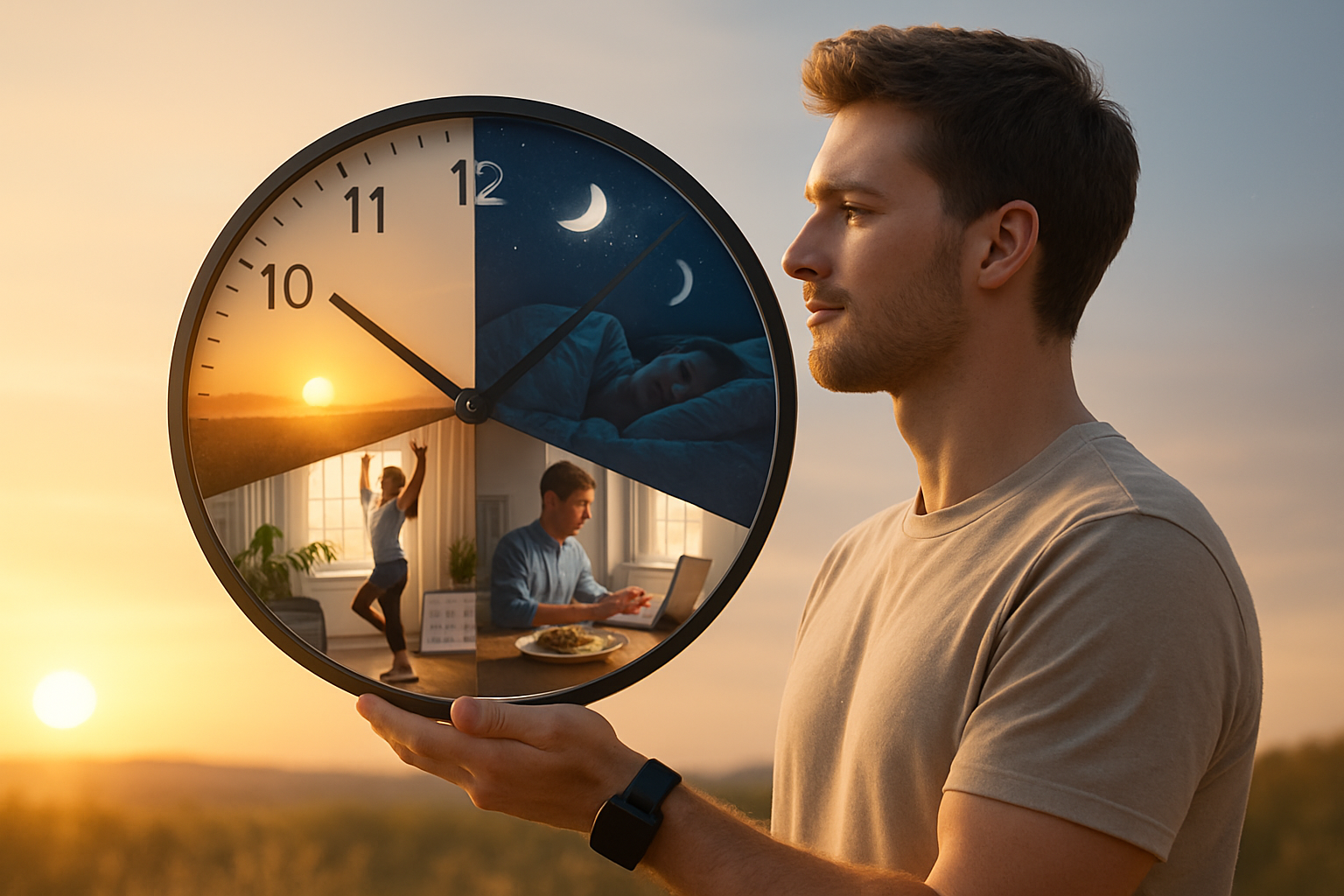Exploring the Health Benefits of Circadian Rhythm Entrainment
Can aligning your daily activities with your body's natural rhythms truly transform your health? Discover how circadian rhythm entrainment, a cutting-edge approach to wellness, is revolutionizing the way we think about sleep, metabolism, and overall well-being. This innovative practice promises to optimize your body's internal clock, potentially unlocking a host of health benefits you never knew were possible.

Historically, human activities were closely aligned with natural light-dark cycles. However, modern lifestyles, characterized by artificial lighting, irregular schedules, and constant screen exposure, have disrupted our natural rhythms. This misalignment, known as circadian disruption, has been linked to numerous health issues, including sleep disorders, metabolic problems, and increased risk of chronic diseases.
The Science of Circadian Rhythm Entrainment
Circadian rhythm entrainment is the process of synchronizing the body’s internal clock with external environmental cues, primarily light. This practice aims to restore the natural alignment of our biological processes with the 24-hour day-night cycle.
Research has shown that proper entrainment can have profound effects on health. A study published in the Journal of Clinical Endocrinology & Metabolism found that individuals with well-entrained circadian rhythms had better glucose control and insulin sensitivity, reducing their risk of type 2 diabetes.
Moreover, a groundbreaking study from the University of Colorado Boulder demonstrated that camping for a week without artificial light could reset participants’ circadian rhythms to align more closely with the natural light-dark cycle, improving sleep quality and cognitive function.
Implementing Circadian Rhythm Entrainment
Adopting circadian rhythm entrainment practices doesn’t require drastic lifestyle changes. Here are some evidence-based strategies to help align your internal clock:
-
Light exposure: Seek bright light exposure, preferably sunlight, within the first hour of waking. This helps suppress melatonin production and signals to your body that it’s time to be alert.
-
Consistent sleep schedule: Maintain a regular sleep-wake cycle, even on weekends. This helps reinforce your body’s natural rhythms.
-
Meal timing: Eat meals at consistent times each day. Research suggests that meal timing can influence circadian rhythms in peripheral tissues.
-
Exercise timing: Engage in physical activity during daylight hours. Evening exercise can delay melatonin production, potentially disrupting sleep.
-
Light management: Reduce exposure to blue light from screens in the evening. Use blue light-blocking glasses or apps if necessary.
The Impact on Physical Health
Proper circadian rhythm entrainment has been associated with numerous physical health benefits. A study published in Nature Reviews Endocrinology found that individuals with well-aligned circadian rhythms had improved metabolic health, including better blood sugar control and lipid profiles.
Furthermore, research from the National Institutes of Health suggests that circadian alignment may enhance immune function. The study found that certain immune cells exhibit circadian rhythms, and disruption of these rhythms could impair immune responses.
Cardiovascular health may also benefit from circadian entrainment. A study in the European Heart Journal reported that individuals with irregular sleep patterns had a higher risk of cardiovascular events, highlighting the importance of consistent circadian rhythms for heart health.
Mental Health and Cognitive Function
The impact of circadian rhythm entrainment extends beyond physical health to mental well-being and cognitive performance. A study published in Frontiers in Psychiatry found that circadian rhythm disruptions were associated with an increased risk of mood disorders, including depression and bipolar disorder.
Cognitive function is also closely tied to circadian rhythms. Research from the University of California, Berkeley, demonstrated that older adults with disrupted circadian rhythms experienced more significant cognitive decline over time compared to those with well-entrained rhythms.
Moreover, a study in the journal Sleep found that students who maintained consistent sleep schedules performed better academically than those with irregular patterns, suggesting that circadian entrainment may enhance learning and memory.
Challenges and Considerations
While the benefits of circadian rhythm entrainment are compelling, implementing these practices can be challenging in modern society. Shift work, jet lag, and social obligations can all disrupt our natural rhythms.
However, researchers are developing innovative solutions to address these challenges. For instance, scientists at the Lighting Research Center have designed lighting systems that mimic natural daylight patterns, helping to maintain circadian alignment even in indoor environments.
Additionally, wearable technology is evolving to provide personalized recommendations for light exposure and activity timing based on individual circadian profiles.
Circadian Wisdom: Key Insights for Optimal Health
-
Morning sunlight exposure for 30-60 minutes can significantly improve nighttime sleep quality
-
Eating within a 12-hour window may enhance metabolic health and support circadian rhythms
-
Room temperature fluctuations mimicking natural day-night patterns can improve sleep quality
-
Exposure to natural environments for extended periods can reset disrupted circadian rhythms
-
Certain plants, like lavender and jasmine, may help regulate sleep-wake cycles when used aromatherapeutically
As we continue to unravel the complexities of our internal clocks, circadian rhythm entrainment emerges as a powerful tool for optimizing health and well-being. By aligning our daily activities with our body’s natural rhythms, we can potentially unlock a host of benefits, from improved sleep and metabolism to enhanced cognitive function and emotional well-being. While challenges remain in implementing these practices in our modern world, the growing body of research and innovative solutions offer exciting possibilities for a more balanced, healthier future.





